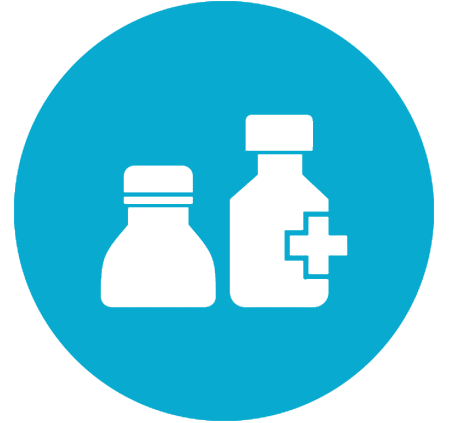Overview
Alcohol dependency can be destructive, painful, and embarrassing for those who are addicted. Compounding the problem, many addicts find it difficult to reveal their challenges with their friends and families. Acknowledging that you or a loved one is addicted is a key step toward recovery; however, your body and mind may still be physically and chemically dependent on alcohol.
Fortunately, there are several medications in the United States that have been shown to be highly effective in helping to treat alcoholism. These medications have enabled people to break their chemical dependencies and regain control of their lives. Acamprosate, one such medication, has been shown to be highly effective in treating alcoholism when paired with counseling and dependency treatment programs.
In this article, we will explore what acamprosate is, how it helps treat alcohol addiction, how it works, and whether there are any side-effects that you should be aware of before using it in your recovery. We will also briefly cover two other medications that are commonly prescribed for treating alcohol dependency: disulfiram and naltrexone. However, we go into those medications in further details in separate articles.
What is acamprosate?

Acamprosate is a medication that you take orally as part of a carefully planned treatment for alcohol addiction. The United States Food and Drug Administration (FDA) approved acamprosate in 2004 for treating alcoholism, and European doctors have been prescribing it for that purpose since 1989. Before acamprosate became a generic medicine, it was known by its trademarked name Campral®.
Acamprosate is one of three medications that are approved in the United States for treating alcohol dependence: acamprosate, disulfiram, and naltrexone. They each are quite different in how they help you in your recovery from alcohol addiction. Your doctor may recommend one of these medications over the others to help you recover from alcoholic dependence.
How is acamprosate used in treating alcoholism?

Acamprosate is only one part of an effective protocol for treating alcoholism. Acamprosate will help you recover from the effects of alcohol addiction, but you must still work with your doctor and counselor to identify reasons why you may have originally become dependent on alcohol.
Like other treatment programs, there are three phases of recovery: withdrawal and detoxification, active medical treatment to help mitigate the desire to relapse, and ongoing therapy and treatment to maintain sobriety. While acamprosate will help you recover from your dependence on alcohol, your commitment to your recovery is the key factor in whether you will be successful in the long term.
When you begin your recovery, your doctor will most likely have you start taking acamprosate after you have completed a period of abstinence and detoxification from alcohol. Your doctor may recommend that you join a formal treatment program when you first begin to abstain from alcohol. Having both the physical and emotional support of a treatment center can make it much easier for you to be successful in your early recovery from alcoholism.
The standard dose of acamprosate is 2-3 capsules per day, depending on your body weight. Your doctor might also recommend that you spread out your doses throughout the day since the medication is not currently designed to slowly release the dose.
Your doctor will also likely recommend that you work closely with a counselor or a treatment center to help you both get support in your recovery and to help you work through any emotional or psychological elements that might be contributing to your desire to consume alcohol.
How does acamprosate work?

Acamprosate simulates a neurotransmitter that your body naturally produces: γ-aminobutyric acid (GABA). GABA is responsible both for maintaining muscle tone and regular cellular biochemistry. Some doctors hypothesize that your brain begins to use alcohol in place of GABA when you become dependent on alcohol. In this theory, acamprosate helps someone recover from alcohol addition by reducing the impact of withdrawal and cravings. Over time, your body is able to begin using GABA again in place of alcohol, enabling your neural and biological pathways to return to normal operation.
While acamprosate does aid in addiction recovery, it is not a cure-all for alcoholism. You must first be motivated and truly want to end your dependency on alcohol. Joining a structured structured treatment program and attending regular counseling sessions will also greatly improve the likelihood of you recovering from alcohol abuse.
Many studies show that a majority of people find that they no longer need to take acamprosate after a year of continuous use. Instead, they continue to work with their counselor and doctor in their recovery, but are no longer physically and chemically dependent on alcohol.
How does acamprosate differ from other medications?
Three medications are currently approved for treating alcohol addiction in the United States: acamprosate, disulfiram, and naltrexone. We have touched on what acamprosate is and how it works so far, but how do the others work? (We go into deeper detail in our other articles on these medications. This section will give you a basic idea of how each differs from the others.)
-
Acamprosate
An oral medication that is believed to affect the GABA receptors of your neurons and to enable your cells’ metabolism return to normal after prolonged alcohol dependency.
-
Disulfiram
An oral medication that causes you to experience extreme physical discomfort if and when you consume alcohol. Common alcohol interactions with this medication include: flushing, nausea, sweating, and vomiting. This medication acts as a physical deterrent to prevent you from consuming alcohol.
-
Naltrexone
An oral medication that significantly reduces your body’s ability to feel pleasure from consuming alcohol. Any alcohol you consume while taking naltrexone, however, will still negatively impact your motor and cognitive skills while you are intoxicated.
Side effects of acamprosate
When you first take acamprosate, you will need to wait between 5 to 8 days to begin feeling its full effects. You should ensure that you regularly take your dose. However, if you do accidentally miss a dose and it’s close to your next dose, you should skip the previous dose and just wait for the one that is upcoming. If you find yourself establishing a pattern where you are missing doses, be sure to speak with your doctor and counselor to see if anything can be adjusted in your treatment.
If you’re a woman and are pregnant or are considering getting pregnant, be sure to talk to your doctor. No studies have been done on pregnant women, but it has been shown to disrupt fetal development in non-human drug trials animals. It’s also possible that the chemicals in acamprosate can pass down through breastfeeding.
How your body processes acamprosate
When you take medications, your body processes them through a standard process of absorption, distribution, metabolism, and then excretion. For example, for a pill that you take orally, the medicine is first broken down in the stomach and then absorbed through your intestines. From there, your body distributes the medication throughout your body through your bloodstream. Most medications are then broken down by enzymes in the liver and then excreted through your urine and feces.
However, acamprosate is not metabolised by the liver and is instead sent to your kidneys directly for excretion. As a result, acamprosate may cause some problems for people with kidney problems. However, for people with liver damage, acamprosate may be safer than naltrexone and disulfiram, which are both metabolised in the liver.
More common side effects
On the whole, acamprosate is a relatively safe medication for use in a comprehensive recovery program for alcohol addiction. It is not addictive and will not result in substance withdrawal effects when you stop taking it regularly.
Acamprosate’s most common side effects include:
- Anxiety
- Diarrhea
- Dizziness
- Insomnia
- Itchiness
- Muscle weakness and fatigue
- Nausea
Like many medications, acamprosate’s more common side effects become less prominent or entirely disappear after taking it for one to three weeks. Because dizziness is one of the common initial side effects, you should avoid using heavy machinery and driving until these side effects have dissipated.
Less common and severe side effects
Some patients taking acamprosate experience depression combined with suicidal thoughts and ideation. These uncommon side effects can affect people that are not normally prone for depression. As a result, it is important for you to speak with your doctor about these side effects to help you determine a plan that you can use with your family and friends if they become concerned for your safety.
Interactions
There are no known major interactions for acamprosate and other medications, and it is generally considered to be safe to take acamprosate with serotonin reuptake inhibitors (SSRIs) and with naltrexone and disulfiram. Doctors also have not identified any known interaction between acamprosate and alcohol. However, if you do consume alcohol during your recovery, let your doctor and counselor so that they can consider changes in your treatment to promote abstaining from alcohol.
Summary
Medications like acamprosate help make your recovery from alcohol addiction more predictable, enabling you to be successful in maintaining your recovery in the long term. Combining regular doses of acamprosate with a solid support system can help you gain control over your addiction, recover from it, and begin exploring the open world of unlimited possibilities that lay before you.
Sources
-
https://store.samhsa.gov/shin/content/MS974/MS974.pdf
-
https://www.aafp.org/afp/2006/0815/p645.html

